
35 aspects of the 15-minute city
Note: This photo essay is adapted from a Twitter thread.
What is the 15-minute city? It's every city ever built by humans on this planet until a century ago, but with a catchy new name. And if the old parts haven't been destroyed in the last century, it's where the tourists go. And people travel across oceans to see the best of them.
Forty years ago, a few pioneers decided to start building 15-minute cities again. Actually, they built 5-minute cities because they didn't think people would walk 15 minutes. This is Seaside, Florida where it all began. Time magazine called it “the little town that changed the world.”

The term “15-Minute City” is much newer; Paris mayor Anne Hidalgo laid out the 15-Minute City idea in her 2020 re-election campaign. It was a sticky term, and has spread around the world since then. People who understand it realize it's much like the most-loved parts of the city.
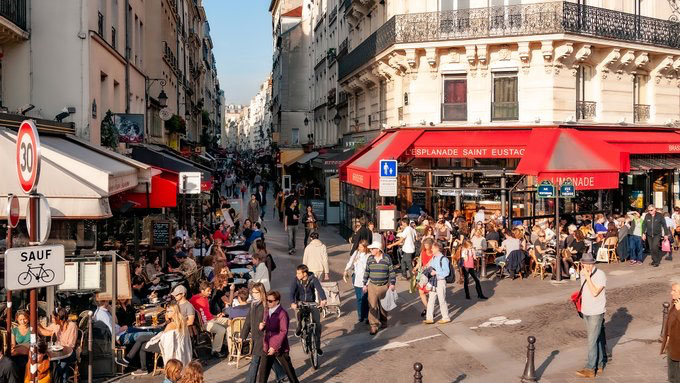
This is about what the 15-Minute City is and what it includes, not what it's not. The first thing it includes is neighborhood groceries. Ideally there are several in a 15-Minute City because I'm of the few people happy to walk that far with a bag of groceries.

Every 15-Minute City should include an old-line hardware store that includes 95 percent of your hardware needs. Sure, for the other 5 percent you'll need to go out and fight traffic on the highway to get to Home Depot, but having a store like Anders nearby gives you choices.
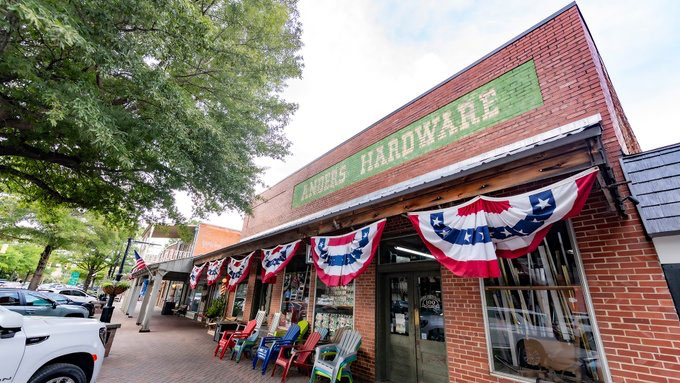
The 15-Minute City makes it easy for people to open a business and become an entrepreneur. It's important to be able to start small with a Single-Crew Workplace like these food carts at Seaside.

Places that transform themselves into 15-Minute Cities attract a lot of young talent because they have a much higher Cool Factor than places with much fewer choices. Boomers and older grew up with few choices (ABC, NBC, CBS, PBS), but young talent won't tolerate that. Have more choices.

If you build higher Cool Factor, you'll have more visitors. So 15-Minute Cities need a good supply of bed and breakfast inns scattered through their neighborhoods, but not on the quietest streets.

A good 15-Minute City doesn't just have lots of choices on where to do business within walking or cycling distance, but also lots of choices on where and how to live. Here's a great cottage court in New Town at St. Charles, just across the river from St. Louis.

A 15-Minute City also has a wide range of home sizes. This cottage and this mansion are just a few blocks away at the Waters near Montgomery, Alabama. The lady of the mansion said “I love living in a place with many home sizes; it's far more interesting this way.”

Most people don't want to, but some love living over the shop where things are hopping at the town square, or on Main Street. America was largely built by people living over Main Street. The 15-Minute City brings back this fundamental choice.
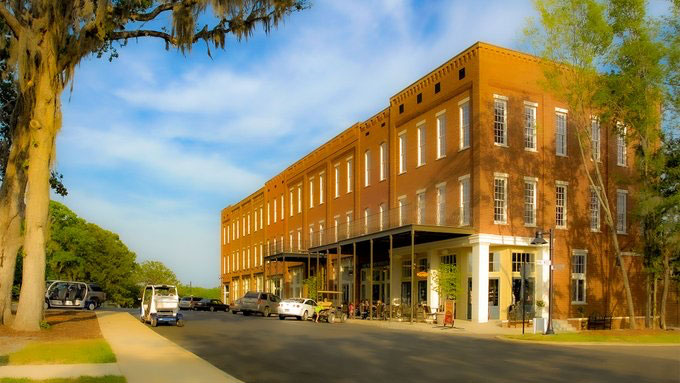
Wherever you choose to live in a 15-Minute City, you're more likely to get to know your neighbors because places not dominated by cars make it easier to get acquainted. After these two finished visiting, the lady on the porch said “that's a new neighbor I met just then.”

Back to other ingredients: every 15-Minute City should have a Maker Space or two. It's part laboratory, part classroom, where future entrepreneurs are figuring out new stuff and learning new skills that will serve them (and maybe you) well for years to come.

Single-crew workplace shops around a court have a long history in 15-Minute Cities. This is Perspicacity at Seaside, but this goes back to the forums, markets, and bazaars of antiquity. No 15-Minute City was ever complete without them.

Every 15-Minute Neighborhood should have an elementary school so the kids can walk to school, usually with a few parents, in a “foot-bus.” And on rainy afternoons parents can park on neighborhood streets until school's out, unburdened by the usual several acres of “stack lanes.”

There should be one large civic space (square or plaza) where large numbers can gather for concerts, celebrations, seasonal events, and other civic events. There should be many smaller civic spaces like squares, parks, and playgrounds so nobody is more than a 2 minute walk away.
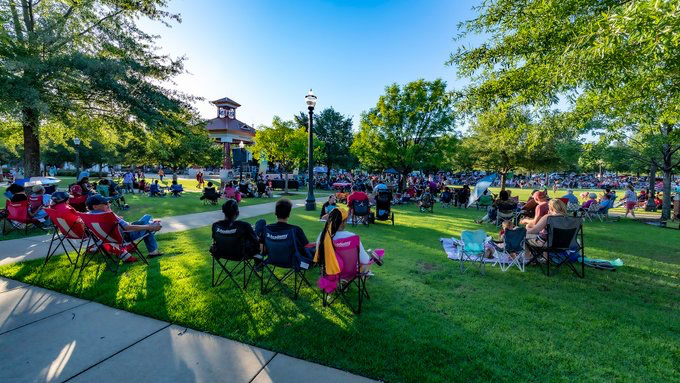
A theater (movie, performance, or both) is a great addition to a 15-Minute City; some consider them essential. Because theaters can draw a crowd, they are best located on a neighborhood square or Main Street.

Pharmacies are essential in the 15-Minute City. Most of what they sell is fairly lightweight, so they don't have to be right next door. If it's a full 15-minute walk, it's unlikely to be a physical challenge.

There should be a handful of barber shops, hairstyle salons & other personal services in the 15-Minute City. People leave refreshed and feeling better about themselves, so these pair well with civic spaces like squares & plazas with many opportunities for social interaction.
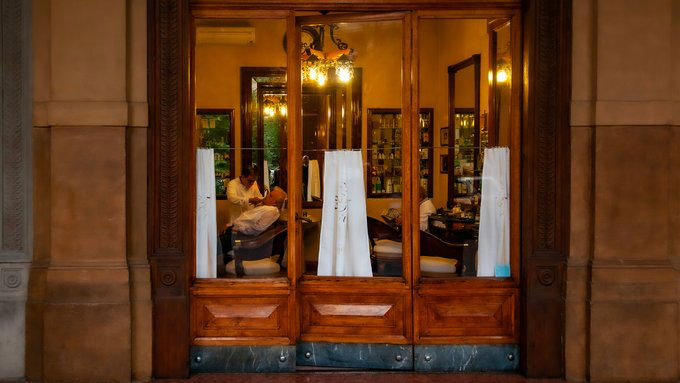
Farmers markets are essential in a 15-Minute City for two reasons: they're a great way to get locally-grown produce and artisanal food products, and because they usually occur only on Saturdays, they become a neighborhood cultural event because everyone's there at the same time.
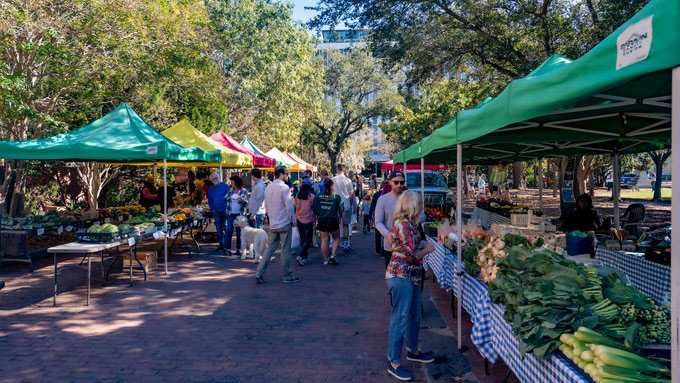
Small neighborhood pubs should be scattered throughout the 15-Minute City. If they're a 5-minute walk or less from anywhere, people aren't tempted to drive, and can easily walk (or stumble) safely home.

Coffee shops should be almost as plentiful in the 15-Minute City as pubs. And coffee shops build Walk Appeal because nothing is as interesting to humans as other humans, and people can sit enjoying their coffee for quite some time.

Sandwich shops are another 15-Minute City staple, and they can be tiny. Mike & Patty's is a single-crew workplace regularly rated as the best sandwich shop in Boston. Mike serves; Patty cooks. The place has line out the door whenever they're open.

Here's a classic French Quarter chamfered corner entry to a white-tablecloth restaurant on a quiet mostly-residential stretch of street. Of all the places to eat in a 15-Minute City, these tend to be the quietest, and so don't have to be on major streets or squares.

The 15-Minute City should be full of service businesses such as this dry cleaning operation, which is right next door to a barber shop. Having lived in three 15-minute places since 1999, I can attest that it's often just as fast to walk or bike as it is to fight traffic.

There are about 10,000 people per US post office so there could easily be 2 or 3 in your 15-Minute City. But because the USPS quit delivering to home addresses in new places years ago, your mail might be much closer, like at the Seaside post office, only a 5-minute walk maximum.

You won't find a cultural arts center in every 15-Minute City, but maybe they should be. The building type is simple: flat floor, wide-open spaces. You could literally have a cultural arts barn. Or rescue a downtown building like this one & build out apartments above for income.
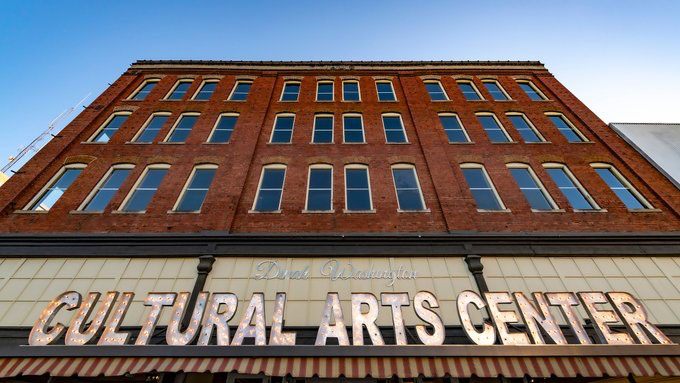
Most banking is done online now, but sometimes you need to actually go talk to someone. You'll find a choice of bricks-and-mortar (or in this case, stones-and-mortar) banks in a 15-minute city.

Only a tiny fraction of Americans have the Library of Congress in their 15-Minute City, but library options are growing today, from city libraries to informal “tiny libraries” on neighborhood streets. And libraries are redefining themselves in the age of Google with new offerings.

Jobs occur across the 15-Minute City from employment centers, to live-work streets, to corner stores and workshops, to work-from-home, and the most resilient places do more grassroots incubation and growth—and less multinational-chasing. The Village of Providence has thousands of jobs.

Work-from-home is here to stay from some percentage of the workforce, and is a driver of the 15-Minute City because the ability to get to your daily needs from home makes home a much more viable workplace. Carving out a corner of our living room was our first step a decade ago.

Daycare is essential to millions in the workforce with children, but that need is greatest to those working from home because even if the daytime caregiver is a grandparent, children feel free to completely dominate their parents’ working hours. Daycare is a 15-Minute City must.

Some think of town centers as open-air shopping malls, but retail didn't occupy more than about 18 percent of historic American downtowns. Craft workshops (even home workshops) are a great fit in the 15-Minute City because the scale of their staff and their shipments is small.

Medical establishments thrive in the 15-Minute City. Those with a retail component like optometrists do well on Main Streets. Doctors, dentists, and chiropractors also do fine near Main Streets. Veterinarians are good on side streets, but shouldn't have outdoor kennels because of noise.
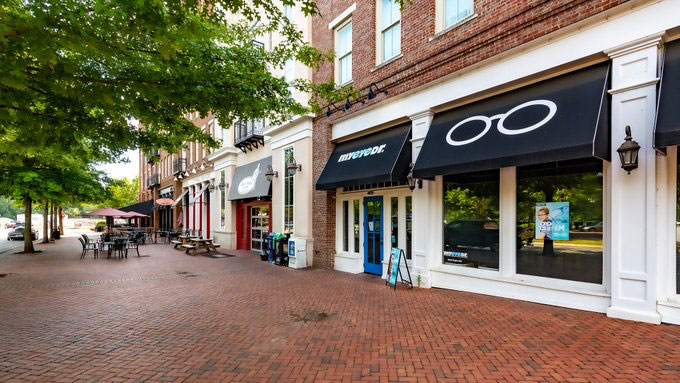
Sidewalk cafes are Walk Appeal superfood and great indicators of many beneficial things in your 15-Minute City. Places to see and be seen, neighbors get acquainted there, people get acclimated to the local environment—harbingers of more prosperous times ... the list is long.

If street performers show up in your 15-Minute City, you know you have one of the best because they only go where they can safely set up in the street—and there are enough people walking by that they can make a living from the tips.






